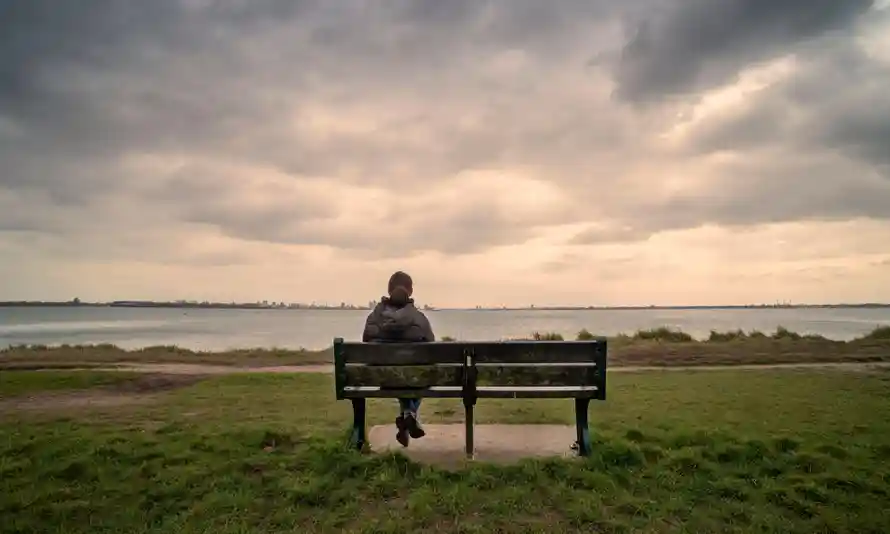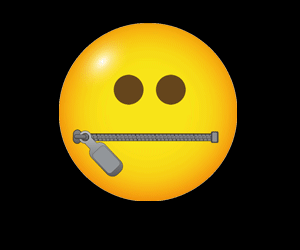More than one in five adults said they experienced a complete breakdown in a relationship at home or at work in the past year, the U.K.’s largest study of social ties during the pandemic has revealed. The Guardian has more.
Younger people were more likely to have their relationships affected, with experts saying it showed the disproportionate effect of the pandemic on this age group. They added that job losses and anxiety over finances could have played a role, as well as the inability to see people outside their household during the lockdown.
A quarter of people reported worsening relationships with their spouse or partner and a quarter reported difficulties with colleagues or co-workers, according to University College London’s COVID-19 Social Study. More than one-fifth (22%) of adults experienced a complete breakdown of a relationship with either family, friends, colleagues or neighbours.
Launched in the week before the first lockdown started, the ongoing study showed that adults aged 18-29 were most likely to report a relationship breakdown – 35% compared with 12% of adults aged 60 and over.
However, it was not all bad news, as nearly half (46%) of young adults said the quality of their relationships with their spouse or partner had been better than usual over the past year. This is a higher proportion than in adults aged 30-59 and those aged 60 and over, with 27% and 21% of these age groups reporting a better relationship with their spouse or partner respectively.
The study is being funded by the Nuffield Foundation, with additional support from Wellcome and U.K. Research and Innovation (UKRI). It has had more than 70,000 participants, who have been followed across the past 72 weeks.
The study’s lead author, Dr Elise Paul from the UCL Institute of Epidemiology and Health, said the report showed “the mixed impact of the COVID-19 pandemic”. She added: “Younger adults reporting a better relationship with their spouse or partner may have benefited from furlough or remote working allowing them to spend more time together.
“On the other hand, the stress of the pandemic and lockdown measures which prevented people from seeing those outside their household may have contributed to the breakdown of other relationships, particularly those with people who do not live close by.”
Worth reading in full.











To join in with the discussion please make a donation to The Daily Sceptic.
Profanity and abuse will be removed and may lead to a permanent ban.
”Description of the frequency of side-effects
Very common greater than 1 in 10
Common 1 in 100 to 1 in 10
Uncommon [formerly ‘less commonly’ in BNF publications] 1 in 1000 to 1 in 100
Rare in 10 000 to 1 in 1000
Very rare less than 1 in 10 000
Frequency not known frequency is not defined by product literature or the side-effect has been reported from post-marketing surveillance data” my emphasis
This is from the BNF, the bible of prescribing.
https://bnf.nice.org.uk/medicines-guidance/adverse-reactions-to-drugs/
From the same publication:
“Newer drugs and vaccinesOnly limited information is available from clinical trials on the safety of new medicines. Further understanding about the safety of medicines depends on the availability of information from routine clinical practice.
The black triangle symbol identifies newly licensed medicines that require additional monitoring by the European Medicines Agency. Such medicines include new active substances, biosimilar medicines, and medicines that the European Medicines Agency consider require additional monitoring. The black triangle symbol also appears in the Patient Information Leaflets for relevant medicines, with a brief explanation of what it means. Products usually retain a black triangle for 5 years, but this can be extended if required.
Spontaneous reporting is particularly valuable for recognising possible new hazards rapidly. For medicines showing the black triangle symbol, the MHRA asks that allsuspected reactions (including those considered not to be serious) are reported through the Yellow Card Scheme. An adverse reaction should be reported even if it is not certain that the drug has caused it, or if the reaction is well recognised, or if other drugs have been given at the same time.” My emphasis added.
It’s all very well having a means of reporting adverse events but even if they were collated together, there’s a significant amount of background data that would be required for each adverse event. The adverse events would have to be stratified into life threatening, very serious, serious, minor or something similar. The medical history would be required and other medication taken.
Interestingly there is a section in the BNF that includes drug interactions, not sure where that information is sourced.
Considering that the MHRA’s self-stated mission is Being an enabler, that is, help pharmaceutical companies to sell new stuff despite adverse regulations seeking to make that needlessly difficult, that’s not exactly surprising. The only required property for medical products (of any kind) to enable them to be sold in the UK is Doesn’t kill so many people on the spot that denying causality starts to become difficult.
UK public health officials aren’t specifically seeking to kill people – after all, dead people don’t buy face coverings (requiring mandatory headstone coverings for safety from post-mortem infections would be an idea, though) – but if this or that Joe Nobody or Jane Wedontmiss happen to die while the good cause is being achieved, that’s – unfortunately – unavoidable. Neither Sir Patrick nor Sir Chris nor Dame June are going to loose any sleep over that. Getting knighted means getting righted.
Since you mention other industries that deal with safety issues, as a retired engineer that has worked in the transport field, I also find it weird that the pharmaceutical trade appear to operate on a foreign land. They do not appear to make use of the concept of “safety integrity level”, e.g. These two standards, IEC 61508 and IEC 61511 would appear to be relevant. Maybe they follow them when manufacturing their products, but who knows?
All we get are the blatant lies using the terms like “safe and effective”, with no real evidence to make a wise judgement as to the validity of this or that.
The MHRA’s safety policy is based on a very old and trusted methodology – that of human sacrifice. This methodology goes right back to the Aztecs, where it was found to be highly effective in ensuring that the sun rose the next day. For those unfamiliar with it, in simple terms, it means you sacrifice a certain number of innocent victims every day to maintain the status quo (in this case the status quo being soaring profits for Big Pharma, knighthoods and damehoods al! round for the health professionals, and a subjugated and cowering general population). I hope that provides some reassurance.
Adding a few technical points: Innocent victims is not quite correct. Those who were sacrificed were captives made during some war. Because of this, the primary (or at least most important secondary) business of all of the male Aztec population was to make war one someone to capture more people to sacrifice. This was done in form of an elaborate public procedure during which the captives would basically be skinned alive piece by piece until they died from that. Thank God these noble stone age savages weren’t white. They could have come up with something hideously cruel and useless instead which would have been a constant, mortal danger to anyone within reach!
Good article from someone who knows his stuff. Keep digging, and good luck!
Basically June Raine is criminally negligent. I hope all those injured pursue her for damages, personally. She needs to live out the rest of her years in a bad prison, sharing a cell with cockroaches and eating cat food.
Cat food is too good for her.
Eating the roaches would be more appropriate.
Or an oubliette….
As far as I know, her organization is a bit similar to the USPTO (US Patent & Trade Office) in that it’s either completely or at least to a large degree funded by application fees paid by prospective drug sellers. As everywhere, he who pays the piper, calls the tune. That’s an nice example of small-stateism badly backfiring: A regulator supposed to operate in the interest of the public must be independent from both government and the industry it’s supposed to regulate. Raine isn’t negligent. Her income depends (at least partly) on pharmaceutical companies developing new drugs for sale. Without actually being able to sell them in the general case, nobody would (keep) invest(ing) money into this.
She obviously also isn’t overly troubled by something resembling a conscience. But for a career in either politics or the civil service, that’s pretty much a requirement.
She is responsible for their safety. She can accept payment and remain a safety watchdog. Like when you pay to sit your driving test – you do have to pass requirements or you will fail. Knowing you may fail doesn’t mean you don’t bother to learn to drive (unless you are especially shit and haven’t a chance in hell).
Driving tests are designed such that the vast majority of people will pass despite they lack both the intellectual maturity and the technical prowess necessary for unsupervised operation of such potentially deadly machines as cars happen to be. But that’s an aside.
The MHRA gets a large amount of its funding from the pharmaceutical industry. Hence, it works in the interest of the pharmaceutical industry (that’s the enabler bit). That’s the invariable outcome of such a built-in conflict of interest.
I have little doubt she has an unlimited indemnity from HMG, of the sort school governors do not get.
A pantomime dame if ever there was.As Groucho Marx might say, “She should be on the stage. There’s one leaving in half an hour.”
I’m shocked.
Never for a moment did I ever think something like this would ever happen.
For those who may be a little naive, did you ever actually think that the job of the MHRA was to find any fault whatsoever with the continuous miracle drugs produced by big pharma ?
Look at this and weep you utter bastards :-
https://www.sciencedirect.com/science/article/pii/S027869152200206X
So what is the point of a regulator that cannot regulate?
Perhaps it’s from being naive but I honestly thought the MHRA was a regulator for public safety, but it appears it’s nothing of the sort. They’re keen to promote their pharmacovigilance so if they are doing safety checks re: cvd vaccines, why aren’t these analysis in the public domain? The most egregious aspect of all of this is this impression that they’re there to regulate medicine safety (simply omit “safety” and I guess it’s accurate?). If you were to ask anyone on the street the purpose of the MHRA I’m sure they’d all say “to regulated the safety of medicines for the public”, not function to regulate the enabling of the pharmaceutical sector. If this is accurate it’s quite the revelation.
Fascinating and dispiriting. Well done for the article and the research and good luck with the FOI investigations.
Thank you for your efforts. Like Steve Kirsch in the USA, these organisations must be held to account. Few of us want to tackle that job. But is is so important because chipping away at these organisations eventually leads to findings which are less than satisfactory. Negligence is the word that comes to mind. Whoever thought of the MHRA as a negligent organisation, but there it is. The chipping away appears to show this may be exactly what is happening within the MHRA, the FDA, the CDC, the NIH. Hope the public is listening.
If they ‘had no process to follow up yellow card events’ then they should not have provided EUA for the vaccines. It’s as simple as that.
Thank you Nick Denim. Please keep digging.
Meanwhile Reiner Fuellmich opens the Grand Jury case in the Hague.
This link takes you to 18mins of summary.
https://rumble.com/v1ecssx-from-the-hague.-international-trials-day-one-crimes-against-humanity.html
Well worth a listen/watch.